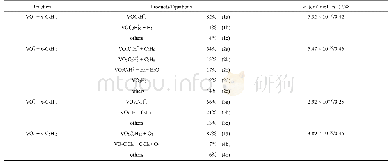《Table 9 Conve rsion and production rate s of che mical familie s pre se nt in bio-oil sample s obta
 提示:宽带有限、当前游客访问压缩模式
提示:宽带有限、当前游客访问压缩模式
本系列图表出处文件名:随高清版一同展现
《Production of liquid bio-fuel from catalytic de-oxygenation:Pyrolysis of beech wood and flax shives》
conversion ratio=(moles obtained w ithout de-oxygenation-moles obtained after de-oxygenation)/moles obtained w ithout de-oxygenation×100%N.C.:no change (same as amount present in non-catalytic sample)
M oving on to Figure 8(b),the phenolic contents in the resulting pyrolytic oils after catalytic treatments have increased very importantly.How ever,from the values from Tables 7 and 9,significant production rates w ere found for phenols in the case of all catalysts,except CoM o/Al2O3for both biomasses.How ever,the difference betw een the biomasses w as that flax shives tended to produce more phenols than beech w ood.Thus,it can be inferred that flax shives may possess a higher lignin fraction than beech w ood,w hich could result in a higher phenol production.Now,it is important to note that w hile phenols majorly arise from the lignin fraction,there is also phenol formation coming from the reaction of w ater and aromatics[37].Therefore,it may also be stipulated that some of the phenols produced could have arisen from a reaction of a fraction of the w ater formed by the pyrolysis reaction w ith aromatics.
| 图表编号 | XD0039690400 严禁用于非法目的 |
|---|---|
| 绘制时间 | 2019.02.01 |
| 作者 | Chetna Mohabeer、Luis Reyes、Lokmane Abdelouahed、Stéphane Marcotte、Jean-Christophe Buvat、Lucette Tidahy、Edmond Abi-Aad、Bechara Taouk |
| 绘制单位 | Normandie Univ,INSA Rouen Normandie,UNIROUEN,Laboratoire de Sécurité des Procédés Chimiques、Normandie Univ,INSA Rouen Normandie,UNIROUEN,Laboratoire de Sécurité des Procédés Chimiques、Normandie Univ,INSA Rouen Normandie,UNIROUEN,Laboratoire de Sécurité de |
| 更多格式 | 高清、无水印(增值服务) |





